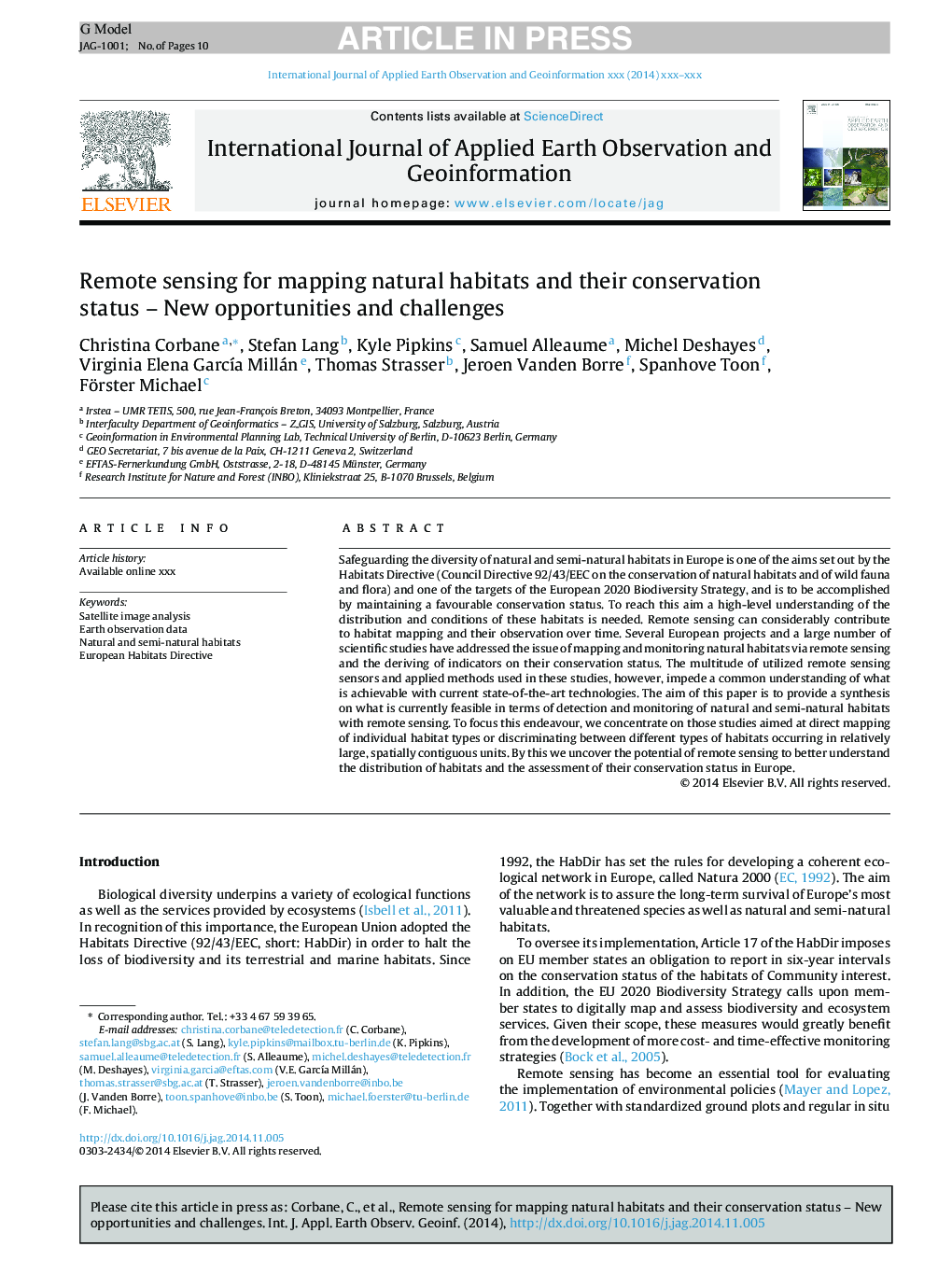| Article ID | Journal | Published Year | Pages | File Type |
|---|---|---|---|---|
| 6348771 | International Journal of Applied Earth Observation and Geoinformation | 2015 | 10 Pages |
Abstract
Safeguarding the diversity of natural and semi-natural habitats in Europe is one of the aims set out by the Habitats Directive (Council Directive 92/43/EEC on the conservation of natural habitats and of wild fauna and flora) and one of the targets of the European 2020 Biodiversity Strategy, and is to be accomplished by maintaining a favourable conservation status. To reach this aim a high-level understanding of the distribution and conditions of these habitats is needed. Remote sensing can considerably contribute to habitat mapping and their observation over time. Several European projects and a large number of scientific studies have addressed the issue of mapping and monitoring natural habitats via remote sensing and the deriving of indicators on their conservation status. The multitude of utilized remote sensing sensors and applied methods used in these studies, however, impede a common understanding of what is achievable with current state-of-the-art technologies. The aim of this paper is to provide a synthesis on what is currently feasible in terms of detection and monitoring of natural and semi-natural habitats with remote sensing. To focus this endeavour, we concentrate on those studies aimed at direct mapping of individual habitat types or discriminating between different types of habitats occurring in relatively large, spatially contiguous units. By this we uncover the potential of remote sensing to better understand the distribution of habitats and the assessment of their conservation status in Europe.
Related Topics
Physical Sciences and Engineering
Earth and Planetary Sciences
Computers in Earth Sciences
Authors
Christina Corbane, Stefan Lang, Kyle Pipkins, Samuel Alleaume, Michel Deshayes, Virginia Elena GarcÃa Millán, Thomas Strasser, Jeroen Vanden Borre, Spanhove Toon, Förster Michael,
